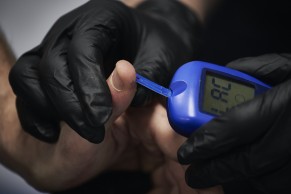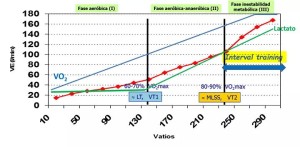Lactic acid can be a source of energy
In the popular imaginary, lactic acid has always been the bad guy that made your legs burn with exertion. However, sports physiology is learning more and more about how our bodies react to intense physical exertion such as cycling and tells us how the lactate generated by our muscles as a result of burning glucose and oxygen is recycled to provide the energy needed to contract with each pedal stroke.

What is lactic acid?
Historically, lactic acid has been considered a kind of demon. A waste substance that was generated by muscles when subjected to intense efforts and that when its concentration increased in muscle tissues, it limited the ability to maintain that intensity, leading us to have to lift our feet.
Lactate
When we perform low-intensity activity, whether in our daily lives or in gentle sport, the energy that moves our muscles is essentially obtained from aerobic metabolism, which uses the abundant fat reserves that the body accumulates.
RECOMENDADO

Black Friday Garmin 2025: the ultimate guide to choosing your GPS at the best price

How to wash your cycling clothes? 10 keys to make them always look new

Cycling can help you fight the effects of the time switch

Easy to apply tips for riding faster

The real importance of signing up for a race

The best road bikes of 2025
As the intensity of exercise increases, the muscle cannot obtain energy from fat at the rate it needs, so it has to resort to stored glycogen, the oxidation of which generates a waste product called lactate, the presence of which can be measured by a lactate test when it appears in the blood in the form of lactic acid.

Current research shows that lactate is constantly produced inside cells, not as a waste product but as a result of glycogen being converted into a substance from which cells derive energy.
Lactic acid in cosmetics
In addition to its physiological implications, lactic acid has other uses, such as the one found in the world of cosmetics and which joins other more common ingredients such as hyaluronic acid.
Lactic acid is used in cosmetics because of the benefits it brings to dehydrated skin due to its ability to attract water. It is also a compound that has exfoliating properties so it is able to improve skin texture and smooth wrinkles.
How is lactic acid produced and what are its effects?
As we explained before, lactic acid is constantly generated as a result of glucose metabolism, being the final substance from which muscle cells obtain their energy.
However, when the intensity of exercise increases, much more lactate is generated than the cell is able to use, which produces an acidification of the environment that alerts the nervous system and results in fatigue, forcing a reduction in the intensity of the effort until equilibrium is restored.

Traditionally, training in endurance sports such as cycling has focused on delaying the point at which the body generates more lactic acid than it can use. This point is determined by the anaerobic threshold, the level of intensity at which the concentration of this substance shoots up because it cannot be assimilated.
However, with experience, trainers learned to enhance another option, to make muscles learn to live with lactate by being able to use more of it through high intensity training, which scientific studies later showed to have the effect of increasing the amount of mitochondria in muscle cells, the places in the cell where lactate is converted into energy.
What the lactate test measures
When establishing training zones, the concentration of lactic acid produced by the cells is a good indicator of how the body is working. When excess lactic acid is produced, it is expelled from the cells and ends up in the bloodstream.

The usual way of determining lactate levels has been by means of a stress test in which the cyclist increases the intensity, taking blood samples with a simple puncture in the earlobe, which are analysed on the spot using portable devices designed for this purpose and which inform us of the concentration of lactate in the athlete's blood.
In these lactate tests, the aim is to determine the aerobic and anaerobic thresholds, which are identified with lactate concentrations of 2 and 4 millimoles per litre respectively. In addition, the so-called maximum lactate steady state is also sought, which is the intensity at which the concentration does not increase by more than 1 millimol per litre and which would determine the maximum cruise intensity that the athlete can sustain.
Lactic acid as a source of energy
The paradigm shift in physiology lies in moving from considering lactic acid as a simple waste product to accepting that it is a source of energy as the end result of glycose metabolisation.

A change in philosophy that has transformed the way of training, increasing the relevance of high intensity training that allows a greater use of the lactate that is produced instead of the traditional concept in which the maxim was to avoid at all costs the accumulation of lactate by maintaining purely aerobic intensities that, evidently, were a limit to the potential of the athlete.
In addition, the excess lactic acid generated that is expelled by the cells can be absorbed by other cells that need it to be used as a source of energy or travel through the bloodstream to the liver where the opposite process takes place and it is stored again as glycogen.
As you can see, lactic acid is one of the most important parameters in endurance sports and its interpretation is constantly evolving thanks to new physiological studies. So if you have not yet done it and you want to improve your performance, we can only recommend that you go to a professional to perform a lactate test and help you interpret the data and include them in your training.